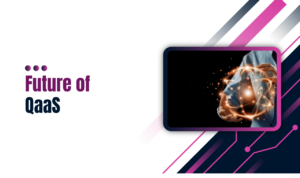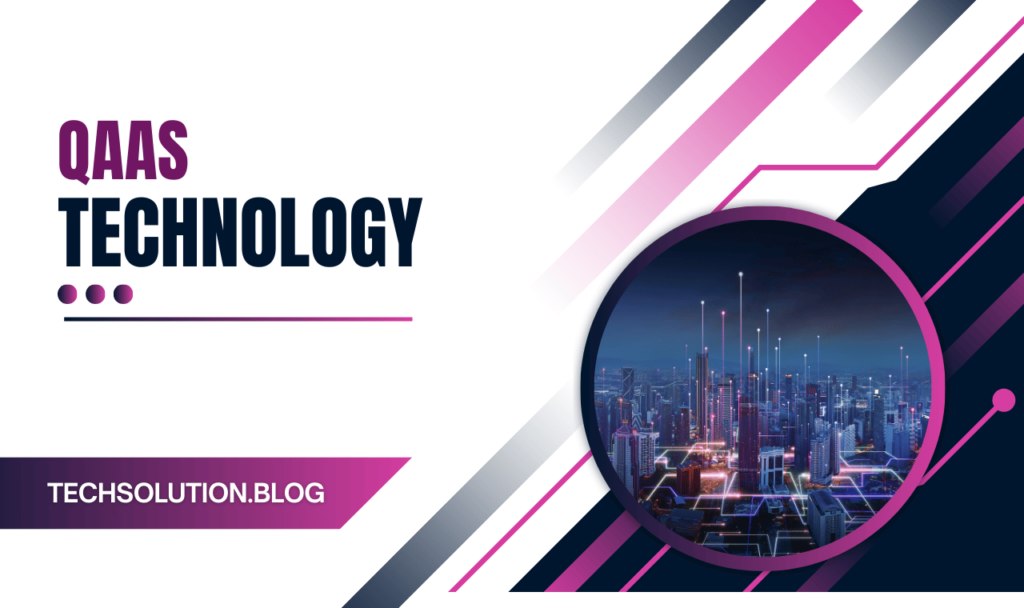Are you ready for a breakthrough in computing technology? Regarding the future of technology, Quantum-as-a-Service (QaaS) is setting the stage for an unparalleled shift in data processing and problem-solving capabilities. QaaS, much like other ‘as-a-service’ models, leverages cloud-based quantum resources, allowing businesses and researchers to access powerful quantum computing without needing expensive setups.
Quantum-as-a-Service, or QaaS, is a cloud-based model that offers quantum computing resources similar to Software-as-a-Service (SaaS) or Platform-as-a-Service (PaaS).
However, QaaS specializes in quantum capabilities, providing users with access to cutting-edge hardware and software. This model allows companies to harness quantum power without investing in costly infrastructure.
Why Does QaaS Matter?
The significance of QaaS lies in its ability to offer computing power far beyond what classical computers can achieve. Complex simulations, optimization problems, and machine learning algorithms can now be processed exponentially faster.
By providing these resources on a subscription or pay-as-you-go basis, QaaS lowers the entry barrier, making quantum technology more accessible to industries such as finance, healthcare, logistics, and cybersecurity.
Advantages of Quantum-as-a-Service
- Accessibility and Cost Efficiency: With QaaS, companies avoid the hefty investment in quantum hardware. Cloud-based access ensures that even small enterprises can leverage quantum computing.
- Scalability: Resources can be scaled based on needs, offering flexibility in experimentation.
- Collaboration: Teams can work remotely, experimenting with quantum algorithms from anywhere in the world.
- Learning and Workforce Development: QaaS also serves as an educational tool, enabling professionals to gain hands-on experience with quantum systems.
How Does QaaS Work?

QaaS providers like Amazon Braket, IBM Quantum, and Azure Quantum offer different quantum computing modalities—superconducting circuits, trapped ions, and neutral atoms—each tailored to specific tasks. These resources are delivered through cloud platforms, allowing seamless integration with classical systems. The result? Businesses can test quantum algorithms, develop quantum-enhanced solutions, and even simulate quantum systems to discover new possibilities.
Real-world Applications of QaaS
Quantum computing has moved beyond theoretical discussions and into practical applications:
- Drug Discovery: Simulating molecular interactions to accelerate the development of new medications.
- Financial Services: Optimizing investment portfolios and improving risk management.
- Supply Chain Management: Enhancing logistics through better route optimization.
- Climate Modeling: Creating more accurate models for climate predictions.
- AI and Machine Learning: Building powerful quantum-enhanced algorithms for faster data analysis.
Key Players in Quantum-as-a-Service
The QaaS landscape is filled with both established companies and startups:
- IBM Quantum: Offering superconducting circuits and cloud-based quantum access.
- Amazon Braket: A diverse array of quantum devices and learning tools.
- Microsoft Azure Quantum: Integrating with Microsoft’s extensive cloud ecosystem.
- Rigetti Computing: Focused on hybrid quantum-classical systems.
- D-Wave Systems: Specializes in quantum annealing technology for optimization tasks.
Pros and cons of QaaS Technology
Pros |
Cons |
| Accessibility: Lowers the barrier for organizations to experiment with quantum computing without heavy upfront investments. | High Complexity: Requires specialized knowledge to develop and optimize quantum algorithms. |
| Scalability: Easily scales quantum resources as needed, making it adaptable for different research and development phases. | Data Security Risks: Quantum data transmission over the internet may pose security challenges. |
| Cost Efficiency: Reduces the need to purchase and maintain expensive quantum hardware. | Latency Issues: Data transfer between classical and quantum systems can introduce delays. |
| Collaboration and Learning: Provides a platform for educational and collaborative research, enabling workforce development in quantum computing. | Regulatory Compliance: Ensuring compliance with privacy regulations when using quantum resources. |
| Remote Access: Teams can access QaaS from anywhere, supporting global collaboration. | Limited Hardware Availability: Current QaaS offerings are limited by the number of accessible quantum computers. |
| Future-Proofing: Early adoption of QaaS prepares organizations for future advancements in quantum technology. | Error Rates: Quantum systems still have high error rates, affecting the reliability of computations. |
The Future of QaaS

Quantum-as-a-Service is poised to revolutionize sectors ranging from healthcare to logistics. As more companies integrate QaaS into their operations, the technology will evolve, offering new features, improved hardware, and expanded accessibility. Future developments might include tighter integration with AI systems, increased support for hybrid quantum-classical models, and breakthroughs in quantum error correction.
Conclusion
When it comes to exploring the potential of quantum computing, QaaS opens up new avenues for innovation. Whether you’re a research institution, a financial firm, or a startup, the accessibility, scalability, and power of QaaS make it an attractive option. As quantum technology continues to develop, QaaS will undoubtedly become a cornerstone of digital transformation, empowering organizations to solve problems that were once considered unsolvable.
If you’re looking to stay ahead of the curve and tap into the potential of quantum computing, now is the time to explore QaaS. From optimizing supply chains to pioneering breakthroughs in drug discovery, QaaS is redefining what’s possible in today’s computational landscape.



